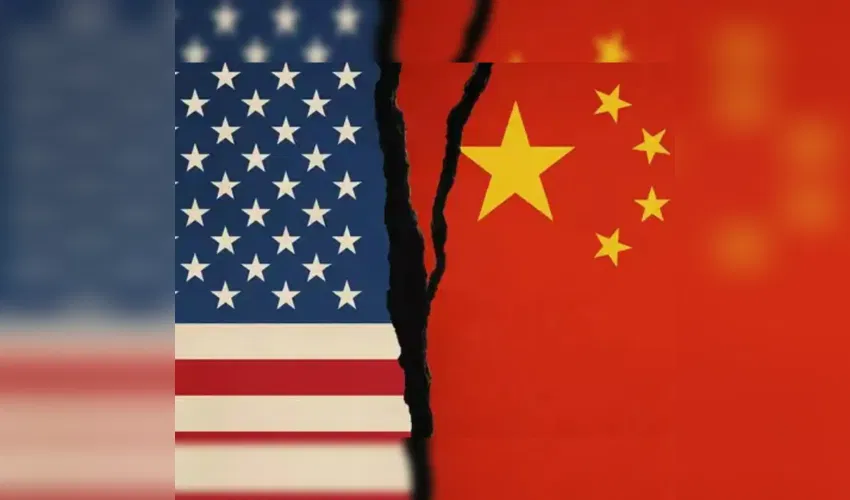World
Escalating Trade Tensions Between China and the United States: Strategic Competition Deepens in 2025

In 2025, the strategic economic rivalry between the People’s Republic of China and the United States has intensified, entering a new and potentially destabilizing phase. A series of tariff expansions, export controls, and retaliatory sanctions have underscored an evolving landscape in which economic tools are increasingly being used as instruments of geopolitical influence. What began as a targeted dispute over trade imbalances and intellectual property has now grown into a broader contest over technological supremacy, supply chain control, and global market access, with far-reaching consequences for international economic stability.
Recent Developments: The New Flashpoints
In the latest round of measures, the United States, under the administration of President [Insert Current President], has implemented additional tariffs on Chinese electric vehicles (EVs), solar components, and semiconductor-related equipment, citing concerns over industrial overcapacity, unfair subsidies, and national security risks. In response, China’s Ministry of Commerce has announced new export restrictions on critical materials, particularly rare earth elements and refined strategic metals essential to Western defense and high-tech industries. Beijing has also placed several U.S. firms under national security reviews, citing data security violations and compliance with Chinese cybersecurity laws. Both sides have also intensified their scrutiny of foreign direct investment (FDI), cross-border capital flows, and technology licensing agreements, effectively deepening the decoupling process that began in the late 2010s.
Underlying Strategic Motivations
While official rhetoric focuses on specific trade and investment grievances, analysts widely agree that the core of the dispute lies in long-term strategic competition. The U.S. seeks to contain China's technological rise, especially in fields such as AI, quantum computing, and semiconductors, viewing Chinese dominance in these sectors as a direct threat to American economic and military primacy. China, on the other hand, views such containment efforts as neo-containment an attempt to block its rise as a global power and has adopted a more assertive economic policy posture, emphasizing self-reliance and dual circulation strategy. This structural divergence has turned what were once cyclical trade disputes into persistent systemic confrontation.
Impact on Global Supply Chains and Markets
The consequences of escalating U.S.-China trade tensions extend far beyond the scope of bilateral relations, impacting the global economy in significant ways. One of the most immediate effects has been the disruption of global supply chains, particularly in critical sectors such as electronics, green energy, and electric vehicle (EV) batteries. Market volatility has also intensified, as investors navigate heightened uncertainty related to tariffs, compliance risks, and geopolitical flashpoints, including tensions over Taiwan and the South China Sea. Additionally, trade diversion is becoming increasingly apparent, with countries such as Vietnam, Mexico, and India emerging as alternative manufacturing hubs as businesses seek to reduce dependence on China.
In response to these uncertainties, multinational companies are adopting "China+1" strategies, diversifying their supply chains to mitigate geopolitical risks. At the same time, regional blocs like the European Union (EU) and the Association of Southeast Asian Nations (ASEAN) are under growing pressure to either align with one of the major powers or play a mediating role amid rising economic fragmentation.
China’s Policy Response: Assertive but Risky
Beijing has responded with a combination of countermeasures and narrative framing, accusing Washington of engaging in “economic coercion” and “weaponizing globalization.” Chinese state media has emphasized national resilience, and policymakers have introduced subsidies and policy support for domestic innovation in key sectors.
However, critics argue that China’s tit-for-tat responses risk deepening global isolation, particularly as its assertiveness draws criticism from other trading partners. Moreover, restrictions on outbound investment and tech sharing could undermine China's long-standing efforts to portray itself as a reliable player in global trade.
Winners, Losers, and Unintended Consequences
While both the United States and China assert that their actions are aimed at protecting national interests, the ongoing escalation in trade tensions is generating several unintended consequences. Consumers in both countries are experiencing higher prices as a result of increased tariffs and import restrictions, placing additional strain on household budgets. Small and medium enterprises (SMEs), especially those operating in export-oriented sectors, are facing heightened uncertainty, which affects investment decisions and long-term planning.
Emerging markets may find opportunities in the realignment of global supply chains, yet they remain vulnerable to fluctuations in global demand caused by the broader instability. Furthermore, the prolonged trade conflict threatens to undermine collective efforts to address pressing global challenges such as climate change, public health, and financial market stability areas where sustained U.S.-China cooperation is crucial for meaningful progress.
Toward Strategic Decoupling ?
The ongoing escalation in U.S.-China trade tensions represents more than a bilateral economic dispute. It is a reflection of an evolving geostrategic rivalry, where economics, technology, and ideology intersect. Unless mitigated through multilateral diplomacy, rules-based arbitration, or confidence-building measures, the current trajectory risks solidifying a divided global economic order. Both Beijing and Washington now face a critical choice: continue down a path of confrontation with compounding risks or find a framework for strategic coexistence that allows competition without collapse.
This image is taken from The Economics Times.



